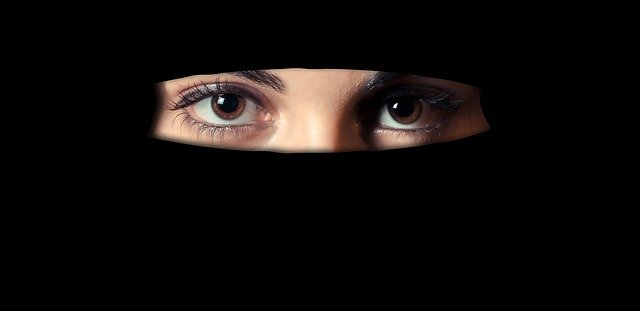 A hijab is a type of veil worn in a male’s presence by a woman that should cover their chest and head. The term also refers to any face, body, or head covering worn to confront the Muslim modesty standards by a Muslim woman. It also refers to the seclusion of females from males in a public place. Moreover, in other words, Hijab is a metaphysical dimension that separates the world or man from the almighty.
A hijab is a type of veil worn in a male’s presence by a woman that should cover their chest and head. The term also refers to any face, body, or head covering worn to confront the Muslim modesty standards by a Muslim woman. It also refers to the seclusion of females from males in a public place. Moreover, in other words, Hijab is a metaphysical dimension that separates the world or man from the almighty.
In Iran and Indonesian Aceh province, all women are required to wear a hijab. But nowadays, numerous countries have banned it as in some cases, and people consider the Hijab as a sign of fundamentalism or political Islam against the secular Government. This Islamic dress code is a dominant symbol of Islam in Western Europe. In many countries, the Hijab has led to many bug political controversies and thus ban this dress code.
If you want to buy Islamic Dresses like Hijab, Abaya, Burqa Online than visit to hijabo.in, Amazon, Flipkart, Myntra. Hijabo is one of the best Islamic stores in India and right now operating online only.
Legal Enforcement of Hijab in the countries

After the Islamic Revolution in 1979, Iran had made veils and Islamic dress compulsory in their country. In the academic institutions and government offices, it has become mandatory to wear in Iran. The penal code in 1983 announced a severe punishment of 74 lashes for those women who will appear in public with no hijab.
Tehran in 1984 announced a strict dress code for the women that they should carry out even in public establishments. The Ministry of Interior in 1988 particularly specified which acts will be considered against violation of the Hijab law. The Recent Penal code of Iran imposes a fine of 10 days or a stay for two months in prison as a punishment for the failure of wearing Hijab in public without specification of its form.
In religious and Governmental institutions, you need to wear a khimar that means a headscarf and an overcoat, while in other public places, women need to wear loosely tied headscarves commonly known as rousari. The Iran government officially promotes and endorses stricter veiling, praising both the Islamic and pre-Islamic Iranian religious principles and culture.
The Indonesian Aceh province also forces the women to dress in a hijab in public. The central Government of Indonesia allowed Aceh’s leaders to impose Sharia in the year 2001. This law intends to put an end to the separatist revolution in this province.
Moreover, in the UAE, the women need to wear an Abaya (garment to cover their arms and body in public places) irrespective of being a resident or a foreign traveler. According to the Salafi scholars, a woman must cover their face, hands, and entire body when coming in front of unrelated men. Thus most of the Saudi Arabia residents need to cover their hair and body in public. The niqab in Saudi Arabia leaves a long slot for the eyes held together by a narrow or string of cloth.
Unofficial Law to Wear a Hijab
Many Muslim women and girls have fallen into the trap of honor killings in both the western and eastern worlds due to their refusal to wear a hijab. The Government considers this act of lawbreaking as improper perpetration of the orders. In Gaza, Muzama-al-Islami has imprinted informal coercion of women in this sector of the society, forcing them to wear a hijab.
Hamas, the First Intifada of Palestine, has demonstrated this type of behavior. Hamas campaigned for wearing a hijab by the women, along with other notable measures. These measures include segregation of women from the men in public gatherings, women to stay at home and not allowed to study or do a job, and polygamy promotion. During this campaign’s tenure, women who will not abide by this law were physically and verbally harassed. This forces the females of Palestine to wear a hijab just to avoid these punishments.
The Taliban in Afghanistan has also enforced the wearing of a hijab. In this country, women require to cover their faces as well, along with their heads. According to them, the face of a woman is the chief source of corruption for the men. In the capital of the Indian administered Kashmir, Srinagar, a militant group named Lashkar-e-Jabbar, started acid attacks in 2001 on the women who would not wear a burqa. The women of Kashmir who did not veil themselves previously were now condemned to wear a hijab by the area’s separatist and militant groups.
Conclusion
These are some of the countries where the Hijab has become or was mandatory for women. Though there are many countries where Hijab was previously mandatory now, they have banned this dressing attire. The cultural and religious symbol of wearing a Hijab has become prevalent in many countries irrespective of the Muslim population’s total number.
Source:
https://en.wikipedia.org/wiki/Hijab
https://exmuslims.org/forced-hijab-a-brief-overview
